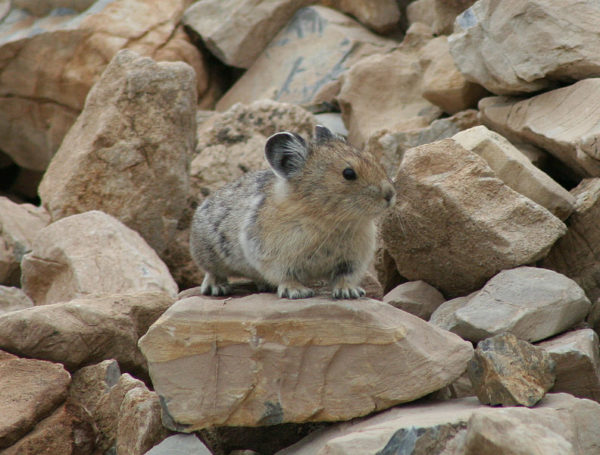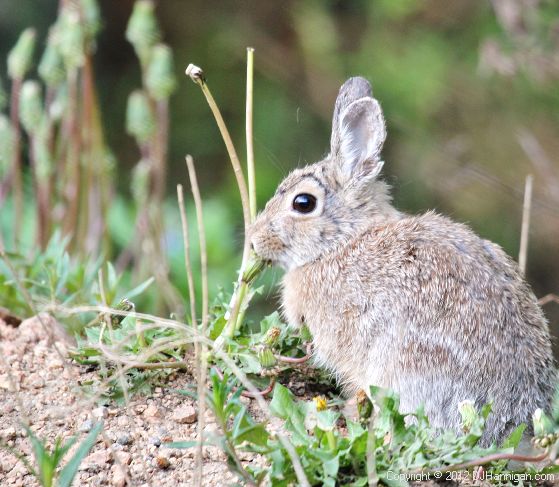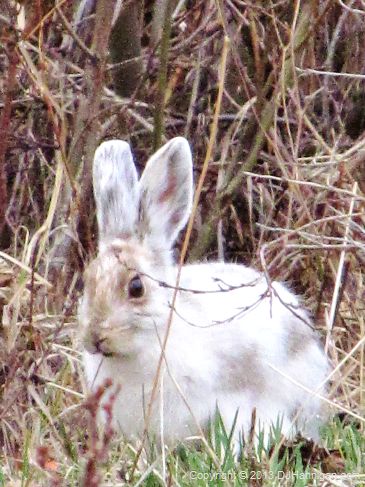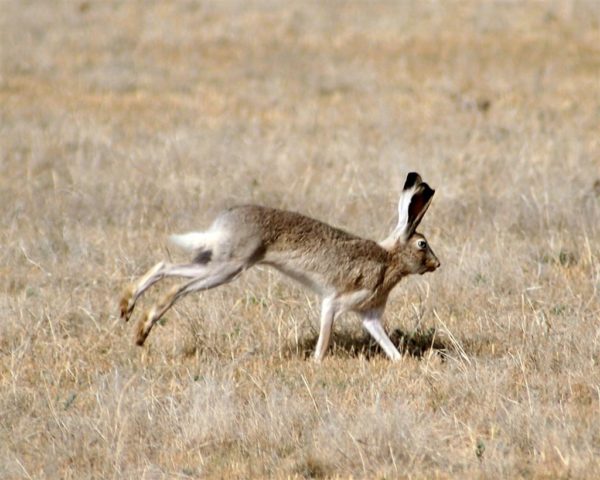Colorado has an amazing array of wildlife – birds, fish, reptiles and amphibians, and mammals large and small. If you live in urban areas, small mammals are some of the most common wildlife you will encounter. Even more species of small mammals can be found in mountainous areas, on the grasslands, or near rivers and streams. Some species are quite common; others are threatened or endangered. Here’s the second in a series taking a look at some of the different varieties of small mammals that can be found in Colorado, and resources from our library and the State of Colorado that you can use to learn more.
Lagomorphs, such as rabbits and hares, are not rodents (which we explored in Part I). While the two share some similarities, their different classifications come not from their long ears or short tails, but from their teeth. Lagomorphs have four upper incisors, while rodents only have two. They also have slightly different skull structures. Additionally, lagomorphs are strictly herbivores, while some rodents are occasional omnivores.
Lagomorphs are quite numerous in Colorado and have been for centuries; in fact, we even have a county named for them – Conejos, which means rabbit in Spanish. The name was given by explorer Juan Bautista de Anza back in 1779.
American Pika

Pikas might look a lot like rodents, but they’re actually lagomorphs, along with rabbits and hares. Pikas live in rocky areas high above timberline, where their tan-gray coats allow them to blend in. Since pikas can be hard to spot, often the best clue for wildlife watchers is to listen for their characteristic squeak. Like their rabbit cousins, pikas are herbivores. During the winter they feed on vegetation that they previously gathered up and stored underneath rocks and boulders.
While pikas are not currently listed as federally threatened or endangered, they are considered a “species of concern” in Colorado. Pikas cannot withstand temperatures in excess of 77.9 degrees Fahrenheit, so climate change may imperil the species. Scientists are actively monitoring pika populations; Colorado State University’s citizen science website, CitSci.org, currently lists seven pika monitoring projects in the western U.S., including several in Colorado. In addition, the Colorado Division of Wildlife in 2009 published the findings of their own detailed study of pika populations in Status of the American Pika (Ochotona princeps) in Colorado.
Cottontail Rabbit

Cottontail rabbits are common in Colorado, including in urban areas. They prefer brushy habitats that they can use to hide from danger, and they can also outrun many predators. Yet because they are so often preyed upon, and also fall victim to disease, a cottontail’s lifespan rarely lasts longer than a year. They make up for their short lifespans by producing numerous litters of young, sometimes as many as six litters during the warm season. Colorado has three species of cottontails. They feed primarily on grasses and forbs.
Hares

Some hares are called jackrabbits, but they’re not really rabbits. Although both are lagomorphs, hares typically have longer ears than rabbits, and much larger feet. The July/August issue of Colorado Outdoors magazine, available for checkout from our library, includes the article “My, What Big Ears You Have,” about the differences between hares and rabbits. Colorado hares include the snowshoe hare, the white-tailed jackrabbit, and the black-tailed jackrabbit. Snowshoe hares are the smallest of the three, and can be found in subalpine forests. The two jackrabbits live at lower elevations, with white-tails in prairie and sagebrush country, and black-tails in the semi-desert areas of southern and western Colorado. Snowshoe hares and white-tailed jackrabbits turn white in the winter, but black-tailed jackrabbits do not.

Photo credits: National Park Service (American pika); David Hannigan, CPW (cottontail, snowshoe hare); Pete Walker, CPW (jackrabbit).
- How to Spot the Differences Between Eagles and Hawks - August 16, 2021
- How Transportation Projects Help Tell the Story of Colorado’s Past - August 9, 2021
- Time Machine Tuesday: The Night the Castlewood Canyon Dam Gave Way - August 3, 2021